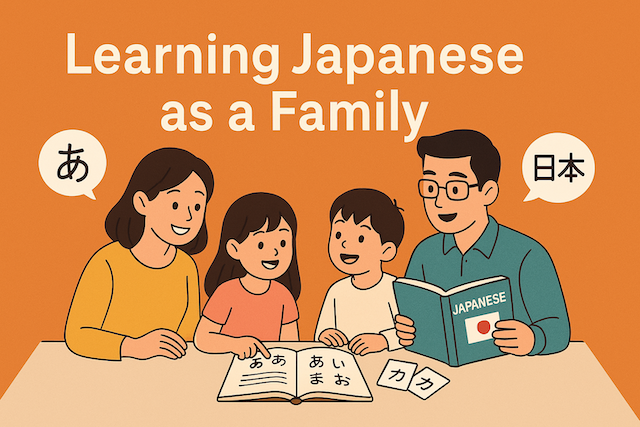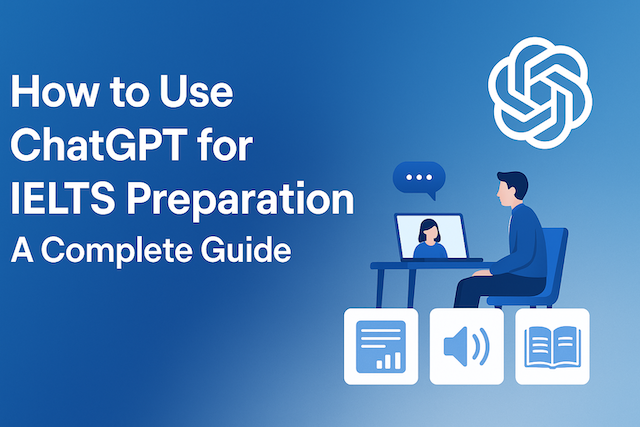Learning Japanese as a Family

Contents
- Learning Japanese as a Family
- Introduction
- 1. Why Learn Japanese as a Family?
- 2. Setting Family Goals for Language Learning
- 3. Challenges International Families Face
- 4. Structured Learning Options for Families
- 5. Learning Together at Home
- 6. Encouraging Children to Learn
- 7. Involving Parents and Grandparents
- 8. Apps and Tools for Every Age Group
- 9. Community & Language Exchange
- 10. Staying Motivated Long-Term
- 11. Preparing for JLPT (Japanese Language Proficiency Test)
- 12. When Japanese Becomes a Second Home Language
- Conclusion
- Frequently Asked Questions: Learning Japanese as a Family
- 1. Is it possible for the whole family to learn Japanese together?
- 2. What are the best methods for teaching kids Japanese at home?
- 3. Are there Japanese schools that offer language classes for parents and children?
- 4. Can I learn Japanese without attending a formal language school?
- 5. What are some recommended apps for family Japanese learning?
- 6. How long does it take for a family to learn conversational Japanese?
- 7. Should our family take the JLPT exam?
- 8. What’s the difference between learning hiragana, katakana, and kanji?
- 9. How can I encourage my child to keep using Japanese outside of school?
- 10. Are there bilingual schools in Tokyo or other big cities?
- 11. What TV shows are best for learning Japanese as a family?
- 12. Can we join community Japanese classes through the city?
- 13. What if the parents are learning slower than the kids?
- 14. Is it worth labeling things in the house with Japanese words?
- 15. Should we speak Japanese at home or stick to our native language?
- 16. Are Japanese tutors available for family or home lessons?
- 17. How do we stay motivated as a family over time?
- 18. Are there Japanese immersion camps or workshops?
- 19. Can grandparents or visiting family participate in learning too?
- 20. What’s the biggest benefit of learning Japanese together?
Learning Japanese as a Family
How to Make Language Learning a Shared, Enjoyable, and Successful Journey
Introduction
Moving to Japan is an exciting opportunity for any international family—but it often comes with one big challenge: learning Japanese. Whether you’re in Japan short-term or planning a long-term stay, acquiring the language together as a family can greatly improve your experience. From navigating daily life to forging meaningful relationships with locals, Japanese fluency—at any level—unlocks countless doors.
In this guide, we’ll explore the benefits, challenges, and best strategies for learning Japanese as a family. You’ll find insights tailored to parents, children, and even extended family members. Whether your goal is basic conversation or full fluency, this article will provide a roadmap you can follow together.
1. Why Learn Japanese as a Family?
a. Enhances Daily Life in Japan
From reading train signs to ordering food or attending school, learning Japanese makes life smoother. For families with children in Japanese schools, it helps both kids and parents understand what’s going on and build confidence in the community.
b. Encourages Cultural Integration
Learning the language shows respect for your host country. It allows deeper participation in community events, PTA meetings, local festivals, and even neighborhood conversations with shopkeepers.
c. Strengthens Family Bonding
When parents and children face the challenge of learning a language together, it fosters a sense of teamwork. You can celebrate small victories—like your child ordering their own ramen or a parent navigating the local clinic in Japanese.
2. Setting Family Goals for Language Learning
Before you dive in, take time to identify shared and individual goals. These might include:
-
Short-term goals: Understanding basic greetings, navigating shopping and transport.
-
Medium-term goals: Holding short conversations, reading menus or signs, helping kids with homework.
-
Long-term goals: Attending Japanese school, working in a Japanese environment, or passing JLPT exams.
Make your goals measurable, age-appropriate, and motivating.
3. Challenges International Families Face
a. Time Constraints
Working parents and school-age children often have busy schedules. Finding a consistent learning routine that fits everyone is essential.
b. Different Learning Speeds
Children may pick up Japanese quickly through immersion, especially in school. Parents may find it more difficult without the same level of exposure.
c. Language Plateaus
It’s common to hit a point where improvement slows. Families must find ways to stay engaged and motivated together.
d. Fear of Mistakes
Adults often feel embarrassed when speaking a new language. Creating a safe, non-judgmental environment at home encourages practice.
4. Structured Learning Options for Families
a. Japanese Language Schools
Many cities in Japan offer part-time or full-time classes for adults and children. Look for family-friendly programs with flexible schedules.
Examples in Tokyo:
-
Shinjuku Japanese Language Institute
-
Coto Academy
-
Tokyo YMCA Japanese Language School
b. Local Government Language Support
Ward offices often provide affordable or free Japanese classes for foreign residents. These community-based programs are great for budget-conscious families.
c. Online Japanese Lessons
Perfect for families on different schedules. Some services offer group family lessons, or kids and parents can learn separately at their own level.
Popular platforms:
-
Italki
-
Nihongo-Pro
-
Preply
-
Japan Switch
d. Bilingual Preschools and Schools
Enrolling children in bilingual schools allows language development without disrupting their core education. Parents can follow along with take-home materials and school communication.
5. Learning Together at Home
a. Designate a “Japanese Time”
Create 30–60 minute blocks where only Japanese is spoken. Start with simple phrases and gradually increase difficulty.
b. Use Flashcards & Games
Make vocabulary fun with tools like:
-
Karuta (traditional matching game)
-
Anki or Quizlet (digital flashcards)
-
Bingo with hiragana or katakana
c. Label Household Items
Place sticky notes with Japanese words on furniture, appliances, and everyday objects to reinforce vocabulary.
d. Watch Japanese TV or YouTube Together
Anime, cooking shows, or children’s programming are all engaging and help with listening skills. Turn on subtitles or Japanese closed captions as needed.
Good family-friendly content:
-
NHK for School
-
Doraemon
-
Shima Shima Tora no Shimajirō
-
Ghibli films (with or without subtitles)
6. Encouraging Children to Learn
a. Emphasize Fun and Reward
Children learn best when they don’t feel pressured. Use sticker charts, praise, or weekend outings to celebrate progress.
b. Support Japanese at School
If your child is enrolled in a Japanese school or international school with Japanese classes, talk with teachers, review assignments together, and show interest.
c. Japanese Picture Books
Start with simple hiragana-based books, then work up to graded readers. Libraries and bookstores like Tsutaya or Kinokuniya often have a children’s language section.
7. Involving Parents and Grandparents
a. Parent-Focused Resources
For adults, consider JLPT preparation books, business Japanese, or conversational lessons tailored to practical situations like shopping or visiting the hospital.
Recommended series:
-
Minna no Nihongo
-
Genki I & II
-
Nihongo Fun & Easy
b. Intergenerational Learning
Grandparents living in Japan (or visiting for long stays) can also join in on language activities. Many apps and TV programs are intuitive and can help them feel more included.
8. Apps and Tools for Every Age Group
| Tool | Best For | Notes |
|---|---|---|
| Duolingo | Parents and teens | Gamified learning, good for beginners |
| LingoDeer | Grammar-focused learners | Highly recommended for Japanese |
| NHK Easy News | Intermediate learners | Real news written in simple Japanese |
| Kanji Tree | Visual learners | Great for studying kanji |
| Hiragana Quest | Kids and beginners | Teaches stroke order and sound |
| JapanesePod101 | Listening & audio learners | Useful for on-the-go families |
9. Community & Language Exchange
a. Join Local Groups
Many cities have family-friendly international groups, moms-and-dads meetups, and cultural exchanges.
Try:
-
Meetup.com (search: “Tokyo Japanese language exchange”)
-
Local community centers or churches
-
Facebook groups like “Tokyo Mothers Group”
b. Host a Language Exchange
Find a local Japanese family who wants to practice English. Set up a weekly playdate or dinner where you swap languages for part of the time.
10. Staying Motivated Long-Term
a. Celebrate Milestones
Track progress using language journals or digital logs. Celebrate each step—completing a hiragana chart, passing a JLPT test, or having your first conversation at the bakery.
b. Create a Japanese Corner at Home
Dedicate a small area with books, posters, flashcards, and audio materials where the family can study together.
c. Travel & Immersion
Visit different parts of Japan for language-rich experiences. Order food, ask directions, and visit museums with Japanese-only exhibits.
11. Preparing for JLPT (Japanese Language Proficiency Test)
If your family is goal-oriented, consider preparing for the JLPT as a shared challenge. Even passing N5 or N4 builds confidence and opens doors.
-
N5: Basic conversational skills (ideal for kids and beginners)
-
N4–N3: Intermediate comprehension (useful for parents)
-
N2–N1: Advanced, business-level fluency
12. When Japanese Becomes a Second Home Language
For long-term expat families or those with Japanese heritage, the language can become a second household language. Strategies to support this include:
-
Encouraging your child to speak Japanese with siblings
-
Using Japanese during home routines (meals, chores)
-
Maintaining Japanese even after returning to your home country
Conclusion
Learning Japanese as a family is not only practical—it can be deeply rewarding. It connects you to your environment, deepens your cultural understanding, and brings your family closer together through shared challenges and victories.
Whether you’re in Japan for one year or forever, your efforts will enrich every trip to the grocery store, school meeting, and neighborhood matsuri. Embrace the process with patience, humor, and curiosity—and remember: 日本語の勉強は楽しいよ!(Learning Japanese is fun!)
Frequently Asked Questions: Learning Japanese as a Family
1. Is it possible for the whole family to learn Japanese together?
Absolutely. Many international families in Japan study Japanese as a shared activity. While each family member may learn at a different pace, joint activities like watching anime, labeling household items, or attending lessons can make it both fun and effective.
2. What are the best methods for teaching kids Japanese at home?
Use picture books, flashcards, language games like karuta, and Japanese-language cartoons. Consider apps like Hiragana Quest or LingoDeer for structured learning. Reading aloud together and daily “Japanese-only” time are also great habits.
3. Are there Japanese schools that offer language classes for parents and children?
Yes. Schools like Coto Academy, Tokyo YMCA, and some international institutions offer family-friendly classes. Local ward offices also sponsor affordable Japanese classes open to all ages.
4. Can I learn Japanese without attending a formal language school?
Definitely. Many families learn through self-study tools like textbooks, YouTube videos, podcasts, language apps, and conversation exchanges. Consistency and exposure are key, even without formal classes.
5. What are some recommended apps for family Japanese learning?
Popular apps include Duolingo, LingoDeer, Hiragana Quest, Anki (flashcards), and NHK Easy News. For kids, YouTube channels like Shimajiro and JapanesePod101 Kids can be highly engaging and educational.
6. How long does it take for a family to learn conversational Japanese?
It varies. Children immersed in school may reach conversational fluency within 6–12 months. Adults often need longer—especially without full immersion—but can hold simple conversations within a year with consistent practice.
7. Should our family take the JLPT exam?
It depends on your goals. JLPT (Japanese Language Proficiency Test) provides a structured goal. N5 or N4 is accessible for beginners. It can motivate your study, especially for teens and adults. Young children often benefit more from informal learning first.
8. What’s the difference between learning hiragana, katakana, and kanji?
Hiragana and katakana are phonetic alphabets and essential for reading. Hiragana is used for native words, katakana for foreign ones. Kanji are characters borrowed from Chinese and require more time to master but are crucial for full literacy.
9. How can I encourage my child to keep using Japanese outside of school?
Make it fun and relevant: use Japanese for games, watch anime, join local clubs, and let them chat with Japanese friends. Reward progress and avoid making language a chore. You can also set daily “Japanese-only” time at home.
10. Are there bilingual schools in Tokyo or other big cities?
Yes. International schools like K. International School Tokyo, Tokyo International School, and Horizon Japan International School offer bilingual programs. Some Japanese schools also support returnee and foreign students.
11. What TV shows are best for learning Japanese as a family?
Try NHK’s “With Mother,” Shimajiro, Anpanman, Sazae-san, or Ghibli films. For older kids and adults, try Terrace House or dramas like “Shitsuren Chocolatier.” Use Japanese subtitles to aid comprehension.
12. Can we join community Japanese classes through the city?
Yes. Ward offices and international associations in most cities offer low-cost or free language classes. These are often taught by volunteers and offer great chances to meet local families.
13. What if the parents are learning slower than the kids?
This is common. Children often learn faster due to immersion. Encourage them to help you, make it a bonding experience, and use tools tailored to adult learners—like grammar books, JLPT materials, or one-on-one lessons.
14. Is it worth labeling things in the house with Japanese words?
Yes! This is a proven method for boosting vocabulary recall. Use sticky notes or printable labels for everyday items like door (ドア), table (テーブル), and window (まど).
15. Should we speak Japanese at home or stick to our native language?
It depends on your family’s goals. Speaking Japanese at home accelerates fluency, especially for kids. However, don’t sacrifice your home language—many families use a “dual language” approach, like Japanese on weekends or during meals.
16. Are Japanese tutors available for family or home lessons?
Yes. Many tutors offer private or family sessions both in-person and online. Platforms like Italki, Preply, or local Facebook groups are good places to start.
17. How do we stay motivated as a family over time?
Celebrate milestones, keep lessons fun, and tie learning to real-life situations. Consider journaling in Japanese, visiting new regions, or challenging yourselves to order at restaurants without English.
18. Are there Japanese immersion camps or workshops?
Yes. Programs like Japan Switch, local universities, and cultural centers often run holiday immersion workshops. Some summer camps for kids also incorporate Japanese learning activities.
19. Can grandparents or visiting family participate in learning too?
Of course. Apps with visual learning, TV programs, and conversational practice can make Japanese accessible for all ages. It’s a great bonding opportunity for multi-generational families living abroad.
20. What’s the biggest benefit of learning Japanese together?
Beyond practical language skills, learning together brings your family closer. It encourages teamwork, mutual support, and creates unforgettable memories of your time in Japan.




